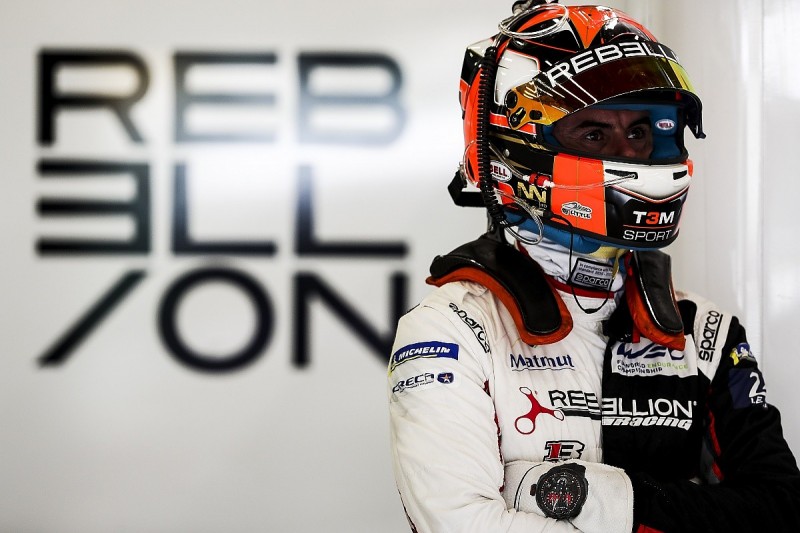Rebellion needs to "wake up" to challenge Toyota in wet conditions at Le Mans
Norman Nato says Rebellion Racing must "wake up" and improve its wet weather performance relative to Toyota after finishing a distant third in Spa's World Endurance Championship round

The solo Rebellion-Gibson R-13 started from pole position last weekend after heading all four timed sessions, each held in dry conditions, prior to the 6 Hour race, but lost out to the pair of Toyota TS050 HYBRIDs when the race went green after four laps on the wet track behind the safety car.
The car shared by Nato, Bruno Senna and Gustavo Menezes fell a lap down on the best of the Japanese cars inside two hours and was never able to make up the lost ground on the way to a distant third place.
The car was up to seven seconds off the pace around the 4.35-mile Circuit de Spa-Francorchamps when the track was at its wettest, and afterwards Nato said the team had no explanation for its lack of wet-weather pace.
"Tricky conditions have been difficult for us in the past, and it has been difficult today, more than expected to be honest," Nato said.
"We knew that we couldn't fight with the Toyota [in the rain], but we shouldn't have been that far away — maybe a second or two maximum, but not seven seconds.
"We just need to understand what's happening.
"So far we don't know what the problem is: it's a lack of grip in general."
Nato said that it is imperative that Rebellion overcome the problem before the Le Mans 24 Hours on 19/20 September if conditions are similarly unpredictable.
"If at Le Mans we have these kind of tricky conditions, it's going to be a tough race for us," he said.
"We need to wake up and find at least half of the problem for Le Mans."

Nato explained Rebellion was unable to switch on the Michelin tyres, a problem it encountered in both wet and dry over the 2018/20 WEC superseason when the LMP1 privateers were running tyres designed for the hybrid Toyota.
A development programme ahead of the current campaign was designed to address that problem.
Nato said that the biggest problem for the Rebellion drivers came when there was standing water on the track.
"As soon as there is water we are suffering with aquaplaning and general grip — it wasn't easy to keep the car on track," he said.
Rebellion was a strong favourite to reprise its 2019/20 WEC victories at Shanghai and Austin because it was running a significantly smaller penalty than the Toyotas under the system of success handicaps introduced for LMP1 this year.
The Rebellion was penalised by 1.58s, the #8 Toyota by 3.08s and the winning #7 Toyota by 3.52s.
The Rebellion was also running in high-downforce specification, whereas Toyota compromised its performance at Spa by choosing to run the low-downforce version of its Le Mans kit.
The Rebellion was competitive over the final three and a half hours of the race after the track dried.
It was seven hundredths faster than the winning Toyota over its fastest 50 laps in this portion of the race.
"It's a negative in terms of race result, but it's not a negative in terms of a weekend because the pole we had was quite good," Nato said.
"During the race, we tried to give the feedback to the engineers on tyre pressures to understand it for the future."
Be part of the Autosport community
Join the conversationShare Or Save This Story
Subscribe and access Autosport.com with your ad-blocker.
From Formula 1 to MotoGP we report straight from the paddock because we love our sport, just like you. In order to keep delivering our expert journalism, our website uses advertising. Still, we want to give you the opportunity to enjoy an ad-free and tracker-free website and to continue using your adblocker.























Top Comments